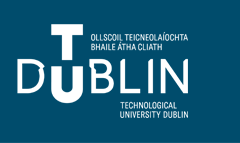Document Type
Article
Rights
Available under a Creative Commons Attribution Non-Commercial Share Alike 4.0 International Licence
Disciplines
Medical engineering
Abstract
Fibrin has many uses as a tissue engineering scaffold, however many in vivo studies have shown a reduction in function resulting from the susceptibility of fibrin to cell-mediated contraction. The overall aim of the present study was to develop and characterise a reinforced natural scaffold using fibrin, collagen and glycosaminoglycan (FCG), and to examine the cell-mediated contraction of this scaffold in comparison to fibrin gels. Through the use of an injection loading technique, a homogenous FCG scaffold was developed. Mechanical testing showed a sixfold increase in compressive modulus and a thirtyfold increase in tensile modulus of fibrin when reinforced with a collagen–glycosaminoglycan backbone structure. Human vascular smooth muscle cells (vSMCs) were successfully incorporated into the FCG scaffold and demonstrated excellent viability over 7 days, while proliferation of these cells also increased significantly. VSMCs were seeded into both FCG and fibrin-only gels at the same seeding density for 7 days and while FCG scaffolds did not demonstrate a reduction in size, fibrin-only gels contracted to 10% of their original diameter. The FCG scaffold, which is composed of natural biomaterials, shows potential for use in applications where dimensional stability is crucial to the functionality of the tissue.
DOI
https://doi.org/10.1016/j.actbio.2015.08.022
Recommended Citation
Brougham, C. et al. Incorporation of fibrin into a collagen–glycosaminoglycan matrix results in a scaffold with improved mechanical properties and enhanced capacity to resist cell-mediated contraction. Acta Biomaterialia, August 2015. doi:10.1016/j.actbio.2015.08.022
Funder
This study has received funding from the Irish Heart Foundation (Grant number 1045940), the European Research Council under the European Community's Seventh Framework Programme (FP7/2007-2013) under European Research Council grant agreement n° 239685 and the School of Mechanical and Design Engineering, DIT; Allison Cudsworth; FOCUS Institute, DIT for SEM work
Included in
Biology and Biomimetic Materials Commons, Biomaterials Commons, Molecular, Cellular, and Tissue Engineering Commons, Structural Biology Commons


Publication Details
Acta Biomaterialia, August 2015.
doi:10.1016/j.actbio.2015.08.022